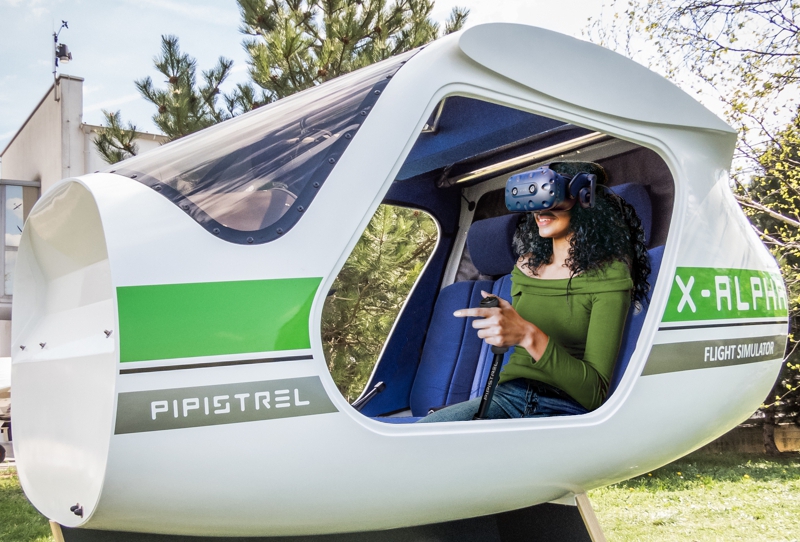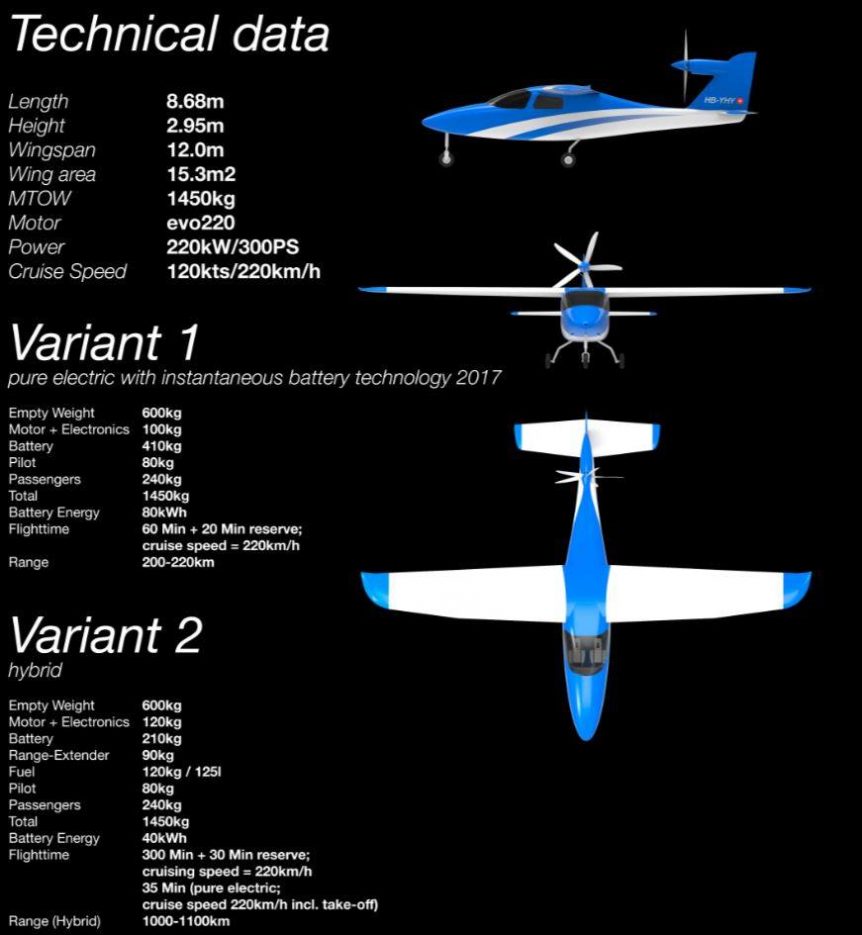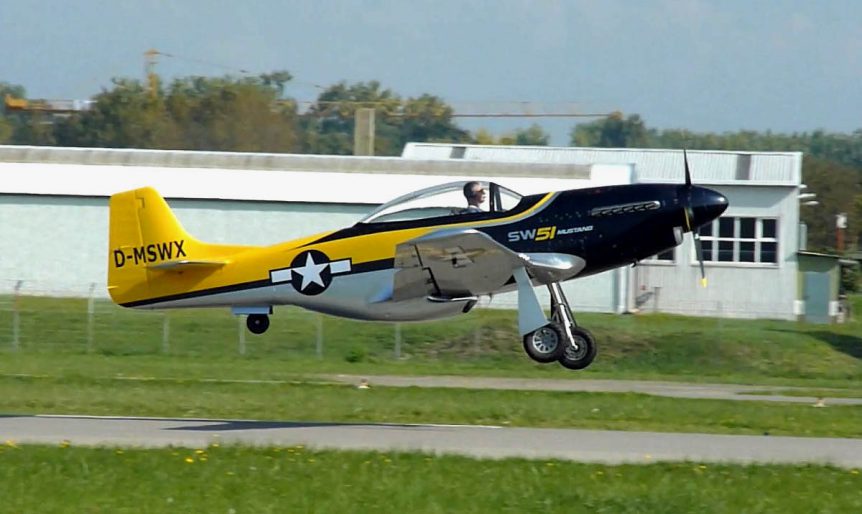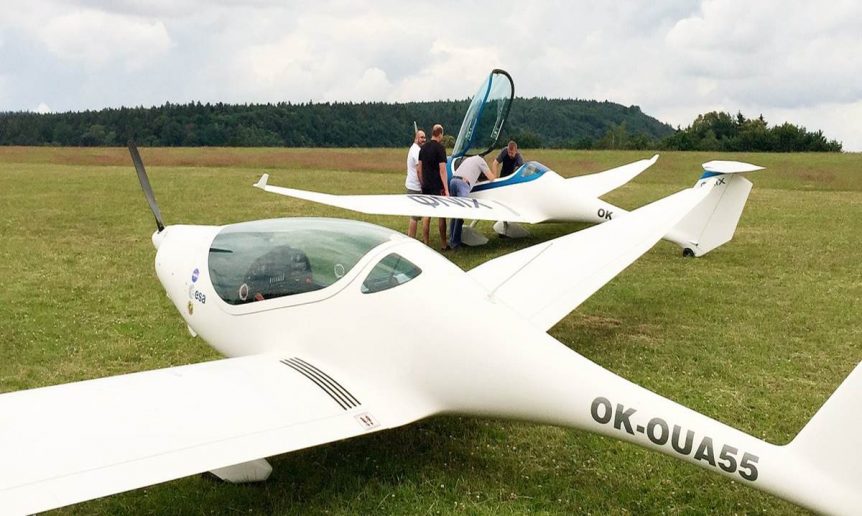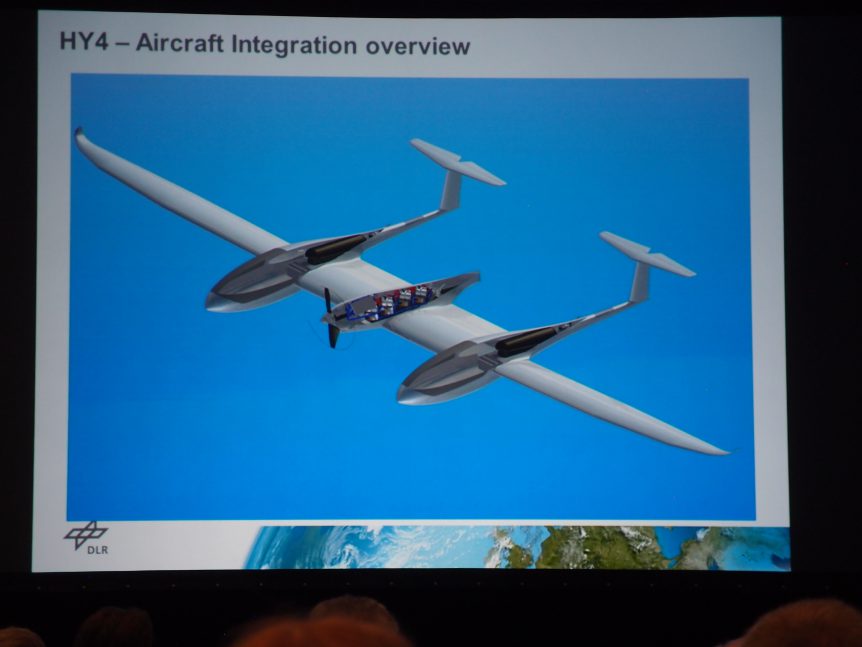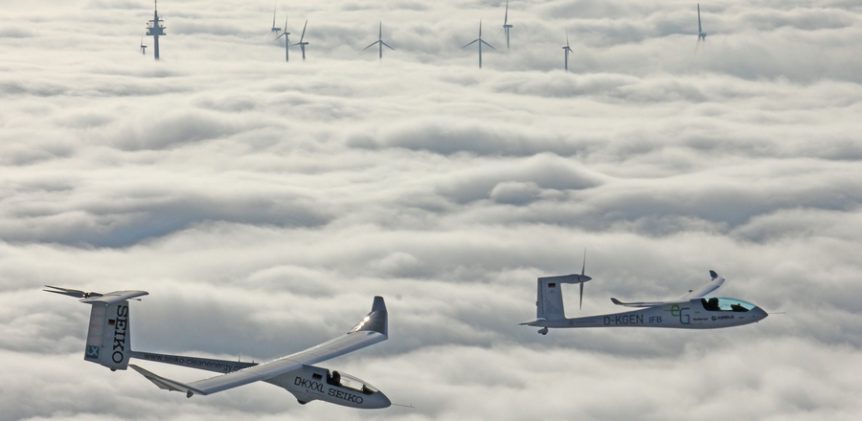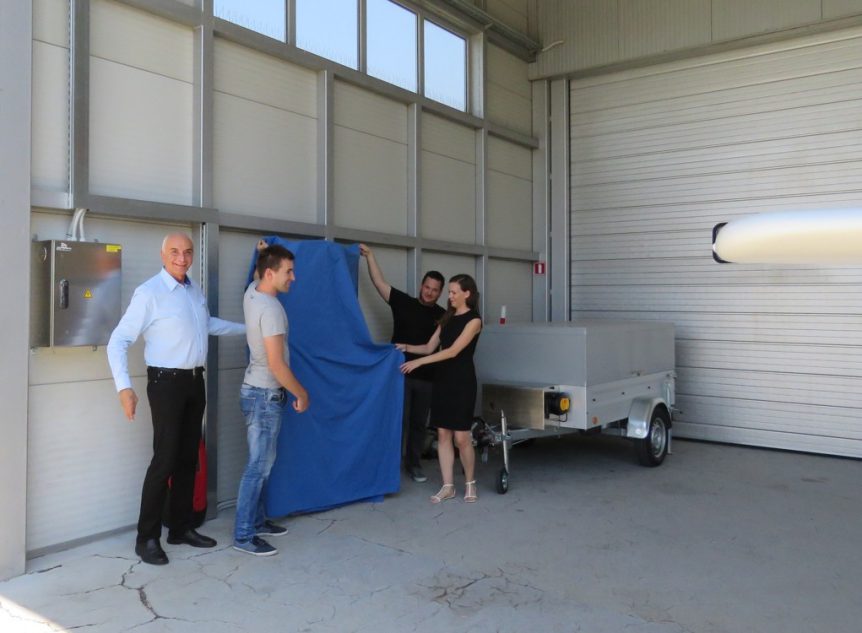One Size Does Not Fit All DLR (Deutsches Zentrum für Luft- und Raumfahrt or German Aerospace Center) and the German Aerospace Industries Association (Bundesverband der Deutschen Luft- und Raumfahrtindustrie; BDLI) present future visions of electric aircraft. These range from a four-seat hydrogen-powered repurposed Pipistrel that nine years ago won the NASA Green Flight Challenge to large, multiple propeller, medium-range airliners. Their White Paper, “Zero Emission Aviation – Emissionsfreies Fliegen” (unfortunately available only in German) promotes the promise of “energy transition in air transport, with the goal of zero emissions,” and claims this is “possible by mid-century but requires a considerable increase in innovation.” Rolf Henke, the member of the DLR Executive Board responsible for aeronautics research and technology, explains, “The time has come to start a new chapter in aviation. Our white paper shows the path to emission-free flying for the ‘Green Deal’ in aviation, which will lead to new technologies, attractive high-tech jobs, fascinating products and the promotion of …
Drones Meeting the Corona Virus Challenge
“Ramadan Mubarak, Dean! “As a kid who grew up in the ’80s, I thought by 2020 we’d have flying cars and a clean planet, and yet here we are grappling with a global pandemic and much uncertainty in these very strange times.” This greeting from Hani Almadhoun, Director of Philanthropy for the the United Nations Agency for Palestine Refugees in the Near East. UNRWA USA, reminds us of our common humanity and spirituality while lamenting the fact that we don’t yet have those long-promised flying cars or at least a well-looked-after planet. Like the virus, the unfulfilled dream of a “flying car” seems universal. Faced with an imperfect reality, fixed- and rotary-wing drones are showing their worth in fighting the Corona virus (COVID-19) virus and other diseases worldwide. We will sample from A (Alphabet) to Z (Zipline) performing life-saving tasks in sometimes surprising ways. Alphabet The Verge reports, “Alphabet’s nascent drone delivery service is booming. “Alphabet’s drone delivery company Wing …
Pipistrel: Generosity Amid Chaos
Taja Boscarol, co-founder and Public Relations Manager of Pipistrel hopes, “You are healthy in these challenging times,” and makes a great invitation to the world’s involuntarily shut-in pilots. Pipistrel has decided to provide an open access to all online training materials during the current period of world-wide enforced isolation as a testament and dedication to safety through continuous training and learning. Pipistrel Academy Computer-Based Training Courses are now available free-of-charge to anybody, for three months. “We hope this will motivate non-flying pilots as well as student pilots and flight instructors to stay connected to their passion and learn more every day. “Anybody, whether student pilot, pilot, flight instructor or aviation enthusiast, flying clubs, flight schools can apply and join the online course free-of-charge for a period of 3 months, from April 2020 until end of June 2020. This unique offer is available worldwide to all, including to non-pilots who are interested in aviation. For followers of electric aircraft development, knowing …
The Villiger Traveler Updated
Urs Villiger flew his Traveler TR230 four-seat touring craft about 10 years ago. He started revising the Cessna-like vehicle two years ago, turning it into a more aerodynamic and economical machine. His changes turned the Traveler into a hybrid aircraft and relocated the propeller to the vertical stabilizer. Reflecting professor Dipl.-Ing. Rudolf Voit-Nitschmann’s configurations he developed for Icare II and e-Genius, the low-drag placement of the drive motor near the top of the vertical fin confines the added drag caused by the propeller’s acceleration of air over the aircraft’s skin to the top-most part of the fin and rudder. Compare the area exposed to propeller blast to that of a conventional nose-mounted engine “tractor” type aircraft. On static display at this September’s Smart Flyer Challenge in Grenchen, Switzerland, the newly revised Traveler showed a streamlined nose fairing that holds a gas turbine (reported from a Panavia Tornado fighter’s auxiliary power unit (APU) attached to the UQM motor/generator. That unit charges …
A Triple-Redundant Powerplant
Your editor saw this Tweet from Frank Anton, head of Siemens eAircraft: FrankAnton @Frank_E_Anton Oct 9 Hybrid-electric with multiple redundancy: three independent drive units in one engine block. Should a module fail, flight can continue with two remaining components. Scalewings engine exists as concept, development work expected to take three years. This caused your editor to go quickly to the ScaleWings home page, where a beautiful P-51 Mustang in 70-percent scale dazzles. The airplane is available in Ultralight, Light Sport Aircraft, and Experimental configurations using engines from the UL and Rotax lines up to a Chevrolet LS300, with a supercharged variant offering up to 600 horsepower. Their brochure, in German or English gives a great overview of the features of this carbon-fiber replica. Scalewings has an even more exciting powerplant on the way, especially for those of us who value our own hides. Their triple-redundant engine/motor combines a naturally-aspirated four-stroke engine, a turbocharged four-stroke engine, and an electric motor. If any one …
The Second SmartFlyer Challenge 2018
Grenchen Airport in Switzerland held the second SmartFlyer Challenge on September 1st and 2nd, with a good showing for the European – and especially the Czech electric aircraft industry. Although smaller in numbers of airplanes than last year’s premier event, the Challenge featured a series of top-drawer presentations by industry leaders, and the viewing of a new Czechoslovokian electric motorglider. A Distinguished Visitor Interest in the event is high in the Canton of Solothurn, the administrative region in which Grenchen resides. The head of the Department of Economics for the Canton, Brigit Wyss, reported on the event in her personal blog. She proclaimed, “Grenchen establishes itself as the European center of electric aviation. The Smartflyer Challenge, which was a novelty a year ago, caught the attention of the representatives of the electrical aviation industry in the second issue. Although fewer aircraft were present than a year ago, the exchange and networking among the actors continued seamlessly. The international character of the …
Sustainable Skies in San Francisco
I’m writing this in the first person, rather than the usual third-person voice that allows me to remain objective about things on which I report. In this case, I have been the recipient of much joy over the last ten years from being an observer of the ongoing progress in electric aviation. Dr. Brien Seeley, founder of the Sustainable Aviation Foundation, asked me to begin writing a blog about electric aviation in 2009. One of my original postings concerned a Kitplanes Magazine contributor, David Ullman – who was this year’s Sustainable Aviation Symposium’s keynote speaker. In 2009, he predicted a great future for electric aviation – most of which has come to pass, and some of which he is creating in his hangar with his fully-instrumented wind tunnel and ambitious blown-wing design. He proposes something called USTOL, Ultimate Short Takeoff and Landing, aircraft that will use a dynamic relationship between their power and lift systems. His vehicle for demonstrating this …
Verdego Aero – Another Variant on VTOL Travel
A Controversy for Starters Skeptics abound concerning the current spate of vertical takeoff and landing (VTOL) machines. The latest entry in the competition comes from the trio of Erik Lindbergh, Eric Bartsch, and Pat Anderson of Embry-Riddle Aeronautical University. Their Verdego eight-rotor machine looks a bit like the Airbus A3 Vahana, but has pusher, rather than puller, propellers on the rear wing. On his Linked In page, Bartsch jumps into an ongoing fray with his article, “The Inevitability of Short-Range Urban Aviation – Why I’m Betting Against the “Flying Uber” Skeptics.” It takes aim at the opposing point of view in “Going Direct: On the Insanity of Flying Ubers,” by Plane & Pilot writer Robert Goyer. To shorten the two arguments to their most primal levels, Eric Bartsch thinks sky taxis are coming and are inevitable. Goyer thinks the idea is insane and not supported by even basic physics or available mechanical systems. He doesn’t acknowledge an advantage to having …
e-Genius Gets Around Quickly, Inspires Others
Birds of the Same Tail Feather Configuration Prof. Dipl.-Ing. Rudolf Voit-Nitschmann (emeritus) had a lot to do with designing the 1996 Icare II solar-powered sailplane and the 2011 e-Genius. Icare II set several world records in its 20 years, most under the guidance of pilot Klaus Ohlmann. e-Genius won the award for being the quietest airplane at the Green Flight Challenge held in Santa Rosa, California, and was a close second to Pipistrel’s G4 in passenger miles per gallon (equivalent) energy use. Dipl.-Ing. Voit-Nitschmann was kind enough to explain to your editor how the propeller center came to be at the top of the tail on e-Genius. It’s a similar configuration to that on the Icare II*, and one he had found to provide the greatest undisturbed air to the propeller and the least added friction drag, since only the lower part of the blade crossed in front of the upper part of the vertical fin and rudder. This configuration …
Pipistrel Opens World’s First True Airplane Charging Station
On August 30. Pipistrel inaugurated the first electric charging station to fully warrant the name, charging one of their own Alpha Electro trainers. The project was co-financed by the Ministry of Education, Science and Sport and the European Union from the European Social Fund. Led by Pipistrel, the LECAD Laboratory, and the Academy of Fine Arts and Design, mentors and students developed and constructed a fully-functioning station. Technical characteristics of the charging station: – capable of charging two electric aircraft at the same time – current strength: 2 x 20 kW – charge speed: one hour to fully charge Alpha Electro – operating voltage 3f 400V AC – WiFi connection to the network As Pipistrel explains, “The goal of the project was the production and installation of a (public) charging station for electric airplanes, since in the filling of electric aircraft, in practice, the need for stationary charging has been shown.” Mentors and students from LECAD Laboratory, the Academy of …



